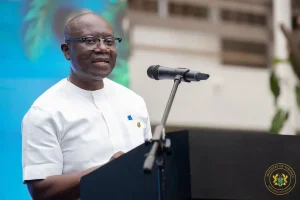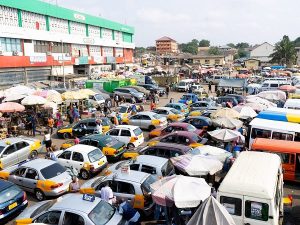The World Bank has urged Middle-Income countries to undergo its recommended transitions and adopt different growth strategies at different stages of development, to avoid falling into what it calls the ‘Middle-Income trap’.
In its World Development Report 2024, titled ‘The Middle-Income Trap’, the World Bank said the 108 countries currently classified as middle-income are struggling to attain their ambition to reach High-Income status.
These remarks were accentuated by the Senior Vice President of the World Bank, Indermit Gill at the launch of the report in Accra on Thursday.
The launch was attended by the Deputy Governor of the Bank of Ghana, Dr. Maxwell Opoku Afari, Robert Taliercio, World Bank Country Director for Ghana, Liberia & Sierra Leone, Western and Central Africa region, Mr. Charles Ambani, UN Resident Coordinator, the Swiss ambassador to Ghana Simone Giger and representatives of civil society organizations.
Mr. Indermit Gill stated in his opening remarks revealed that only 34 countries since the 1990s have attained High-Income status, having done well enough to escape low-income levels and eradicate extreme poverty.
This scenario he said, the report described as the Middle-Income trap, which has characterized how countries have stagnated in their progress in improving their per capita income.
The World Bank Senior Vice President said with rising debt and ageing population, growing protectionism in advanced economies and the escalating pressures to speed up the energy transition, middle-income nations are currently facing headwinds.
The report according to Mr. Indermit Gill, identified pathways for countries finding themselves in the Middle-Income trap to pursue, using the 3is strategy encompassing investments, infusion and innovation.
He said middle-income countries must primarily focus solely on policies designed to increase investment.
Once they attain lower, he noted, the middle-income status countries must shift gears and expand the policy mix to 2i, that’s investment and infusion, and then adopt innovation as they reach the upper middle-income status.
These policy mixes include disciplining incumbents such as market leaders and State-Owned Enterprises, diffusing global technologies and adopting cheap energy, opening up markets and rewarding value-adding firms to stimulate business dynamism.
Participants at a panel discussion on the report which included the Deputy Governor of the Bank of Ghana, Dr. Maxwell Opoku-Afari among others took turns to review the report.
Dr. Opoku Afari said the solution was a non-linear approach rather than a linear one. He said middle-income countries must focus on savings and investment, and also tap into the huge demographic dividend that they have.
Mavis Owusu-Gyanfi, President of the African Center for Economic Transformation noted that the solution was not a one size fits all scenario and there could even be 4is, with the addition of Intentionality.
She queried the suggestion of middle-income countries opening up their economies further, and she opined that countries such as Ghana have not reaped the full benefits of that policy.
UN Resident Director in Ghana, Mr. Charles Abani highlighted the concept of illicit financial outflows as one of the key banes, frustrating middle-income countries. He suggested that the rushed race to the top needs a flattened top and a pushed-up bottom.
Swiss ambassador Simone Giger said Ghana must recall what worked for it during the good times and do what is right. She also advised middle-income countries to endeavour to keep investors happy to retain them, while recreating a new investment climate to attract fresh investors.
Mr. Peter Quartey, the Director at the Institute of Statistical, Social and Economic Research for his part said the menace of borrowing and debt will always hamper the progress of middle-income countries.













